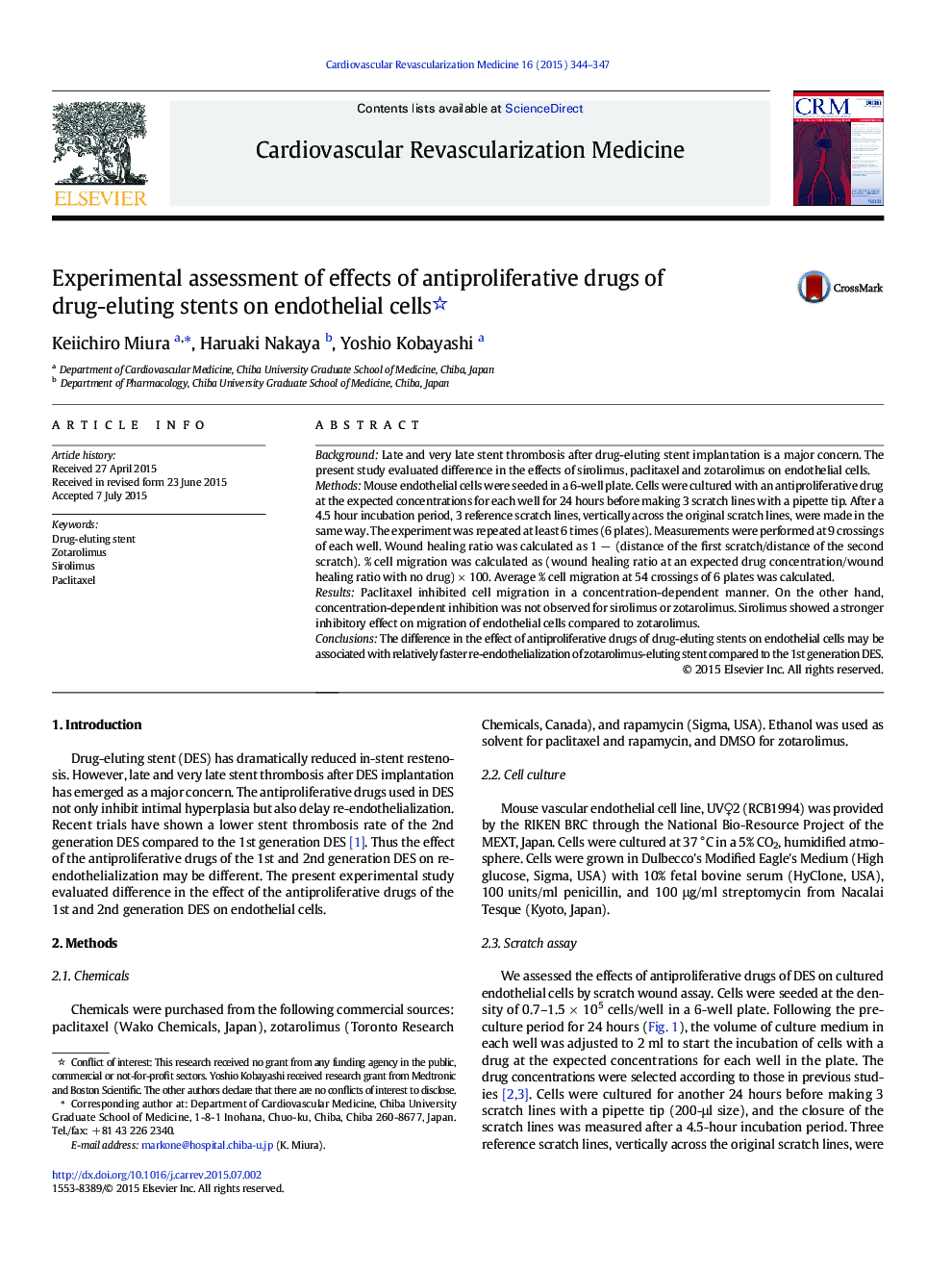| Article ID | Journal | Published Year | Pages | File Type |
|---|---|---|---|---|
| 2836917 | Cardiovascular Revascularization Medicine | 2015 | 4 Pages |
•We evaluated effects of paclitaxel, sirolimus, and zotarolimus on endothelial cells.•Paclitaxel inhibits cell migration in a dose dependent manner.•Zotarolimus and sirolimus inhibit cell migration in a dose independent manner.•Zotarolimus has less inhibitory effect on cell migration compared to sirolimus.
BackgroundLate and very late stent thrombosis after drug-eluting stent implantation is a major concern. The present study evaluated difference in the effects of sirolimus, paclitaxel and zotarolimus on endothelial cells.MethodsMouse endothelial cells were seeded in a 6-well plate. Cells were cultured with an antiproliferative drug at the expected concentrations for each well for 24 hours before making 3 scratch lines with a pipette tip. After a 4.5 hour incubation period, 3 reference scratch lines, vertically across the original scratch lines, were made in the same way. The experiment was repeated at least 6 times (6 plates). Measurements were performed at 9 crossings of each well. Wound healing ratio was calculated as 1 − (distance of the first scratch/distance of the second scratch). % cell migration was calculated as (wound healing ratio at an expected drug concentration/wound healing ratio with no drug) × 100. Average % cell migration at 54 crossings of 6 plates was calculated.ResultsPaclitaxel inhibited cell migration in a concentration-dependent manner. On the other hand, concentration-dependent inhibition was not observed for sirolimus or zotarolimus. Sirolimus showed a stronger inhibitory effect on migration of endothelial cells compared to zotarolimus.ConclusionsThe difference in the effect of antiproliferative drugs of drug-eluting stents on endothelial cells may be associated with relatively faster re-endothelialization of zotarolimus-eluting stent compared to the 1st generation DES.
